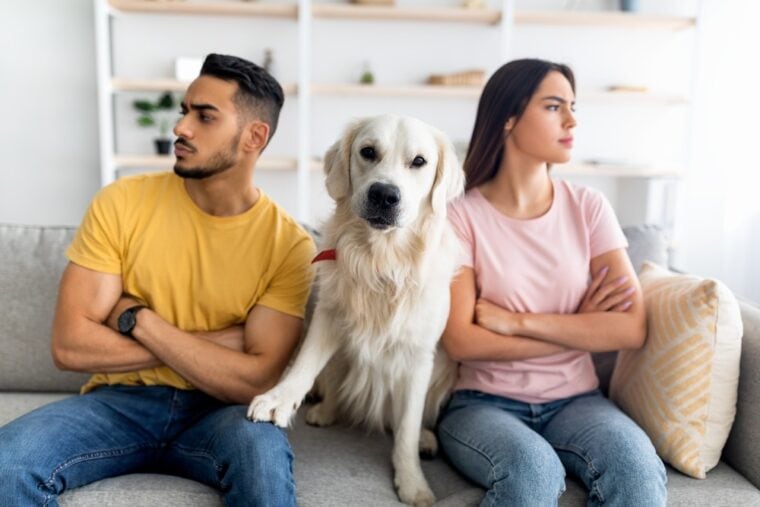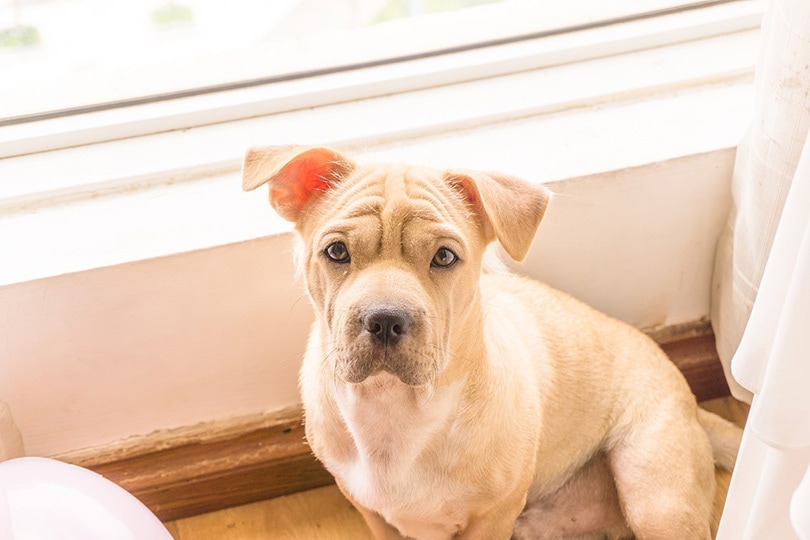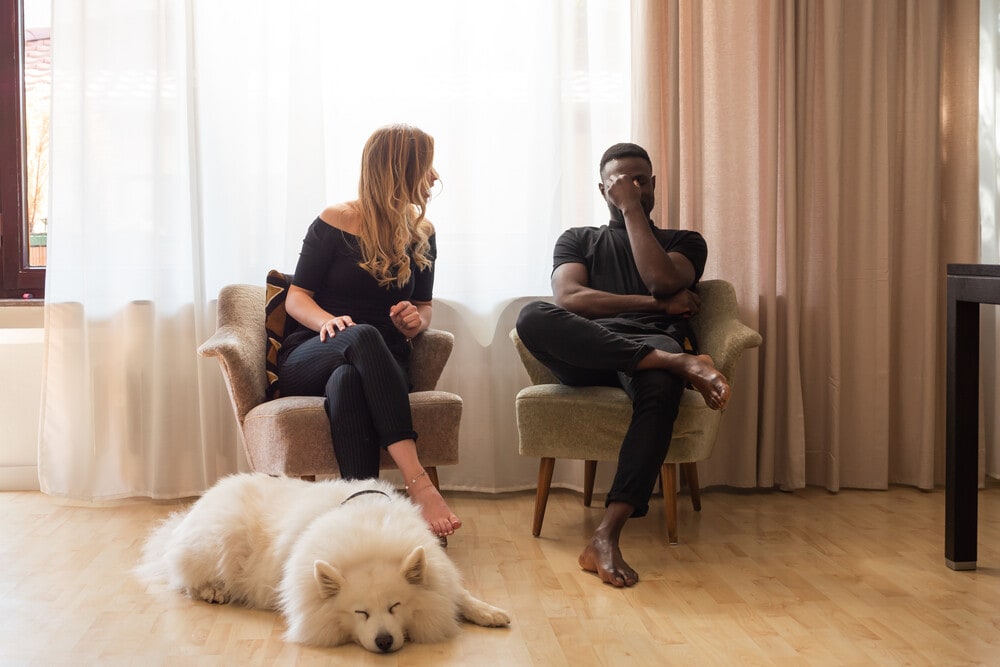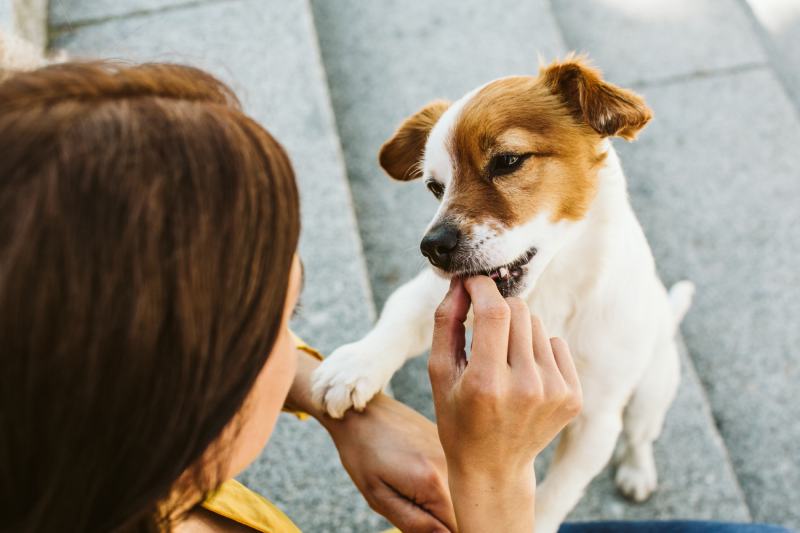
The decision to end a relationship is incredibly difficult and heartbreaking to make. It’s a stressful time for all parties involved, and can be made even more difficult when you have pets together.
Your dog being stuck in the middle of a messy separation can be even trickier than you think. Navigating a break-up with a dog involved requires both parties to act in the best interest of their pet, which may make for some heartbreaking decisions. Read on to learn more about sharing custody of pets amidst a break-up, and how your separation can affect your pets.
Should I Let My Ex See My Dog?
If you and your former partner are on good terms, sharing custody of your pets can work, but the logistics involved in this type of arrangement, along with the personality of the dog need to be taken into account. In some situations, joint custody does more for the human’s peace of mind than the dog’s, and could actually do more harm than good.
When determining if joint custody is appropriate for your situation, ask yourself the following questions:
Easygoing, flexible dogs tend to do better in joint custody situations as they’re just happy to spend time in places with people, regardless of where they are. More sensitive dogs that prefer spending time at home on their favorite bed in their favorite spot are less likely to do well in a joint custody situation as it upends the routine on which they thrive.
You may need to do a trial period to see if shared custody works for your dogs. If they start showing any signs of anxiety, like pacing, panting, trembling, constant licking or yawning, or inappropriate urination, it may be time to stop sharing them between homes and decide who is better suited to be the full-time caregiver.

Remember to Put Them First
Joint custody only works in favor of the dogs if both parties have suitable environments and can provide the necessities. If your ex-partner is unable to meet the needs of your shared pets, it’s in your dog’s best interest not to allow them time together. Equally, if your ex is better able to provide the best home, health and supervision, you may need to relinquish ownership to them.
The emotional turmoil of your ex coming and going might be too stressful or disruptive to your dogs, especially if the visits also cause stress for you. However, many dogs are resilient to the ups and downs, and are just happy to see their favorite people, no matter the circumstances.
Ultimately, the decision about whether to allow your ex to see your dog needs to come down to how comfortable you are with the situation, and how well your dog adjusts to the new arrangement.
Will My Dog Forget My Ex?
If you choose not to share custody, you might wonder if your dog will eventually forget that your ex-partner exists altogether. The truth is that dogs have fantastic memories, it’s likely they’ll always remember your ex, regardless of how long they’ve been apart. What’s more, if your dog was bonded to your ex, they’ll probably miss them dearly. Animals are capable of forming long-term memories of events and people they deem meaningful. If your ex forged a beautiful bond with your pet, they’ll likely be remembered for years.
If however, a shared arrangement is not appropriate or possible, your dogs will be okay. They will miss your ex, and they will grieve for their absence, but they will learn to cope with their absence.

What Does Grief Look Like in Dogs?
As heartbreaking as it is to think about, your dogs can go through a period of grief as they emotionally struggle with the changes to their lives. Many of the signs that your pet is suffering will look similar to how we, as humans, exhibit signs of emotional struggles.
The 6 Tips to Help Your Pet Adjust to a Break-Up
Separations are tough on anyone involved—adults, children, and, yes, pets. In the midst of all the stress, trauma, and challenges that come with a break-up, it’s easy to forget about your dogs and their needs. Dogs are creatures of habit, and anything that interferes with the routine they’ve come to expect can be problematic. It is in the best interests of your pets, your ex, and yourself, to establish some ground rules from the start to make this transitionary period easier on your dogs.
1. Don’t Argue in Front of Them.
Just as you wouldn’t argue in front of children involved in the break-up, you shouldn’t fight in front of your dogs. When you’re upset, your dogs can be too. Additionally, if they’re not used to seeing you angry, your shouting and gestures can put them on edge.

2. Try to Keep Their Routines the Same.
We know keeping routines the same can be challenging when you’re in the midst of a personal trauma like separation, but your dogs rely on you to keep their routines the same to stay settled. So, keep taking them for walks at the same time and feeding them at their usual meal times. Consistency is key to keeping their world as normal as possible.
3. Keep the Move as Simple as Possible.
If the break-up requires you to move with your dogs, that can be a lot of change for your pets in a short period. If you don’t have a new place to settle down just yet, we recommend avoiding moving your pups until you’re making your final move. Toting them around from place to place can be extremely upsetting to your little creatures of habit. Try to avoid moving your dogs until you’ve settled down in the home you’ll be in for the foreseeable future.

4. Bring Creature Comforts.
Your dog likely has a favorite toy, bed, or blanket they find comfort in at home. When you’re settling into your new place, be sure their favorite creature comforts are there waiting for them.
5. Use Calming Products.
If your dogs are having a hard time adjusting to their new reality, you might consider using calming products like supplements or treats. In extreme situations, you may need to speak with your vet about anxiety medication.

6. Be Prepared for Separation Anxiety.
Your dogs may develop signs of separation anxiety after going through such a huge change in their routine and environment. Signs can include:
Separation anxiety can be treated in several ways, depending on the severity. Dogs with mild anxiety may see positive changes after counterconditioning. In severe cases, a more complex desensitization and counterconditioning program may be necessary. Some dogs may even require prescription medication.
Final Thoughts
Separating from your partner is a very stressful time for all parties involved—even your shared pets. Your dogs may go through stages of grief as they adjust to their new life, so you must educate yourself on what you can do to ease this transitional period for your pets.
If the split was amicable, you might discuss sharing custody of your dogs with your ex. Ultimately, though, your dog’s best interests should be at heart. It can be extremely difficult to separate heart from head in these sorts of scenarios, so talk to a friend or relative who you can trust to be objective about the situation. If you don’t believe your pets have the right temperament to live in a shared custody arrangement, you shouldn’t force it onto them.
Featured Image Credit: Prostock-studio, Shutterstock








